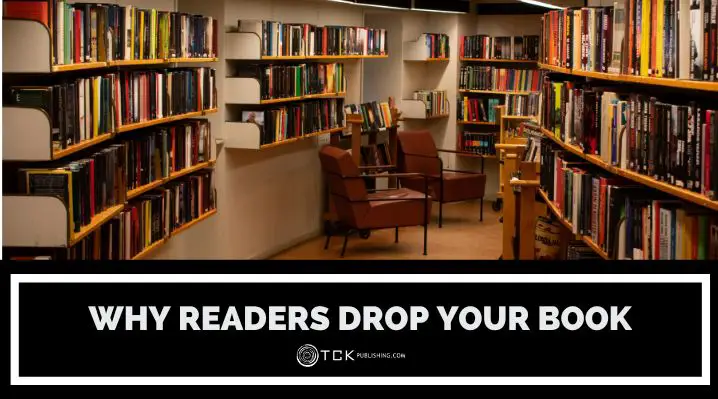
You’ve poured your heart into your book. You’ve spent months—maybe years—writing it. And then someone says, “I started your book but never finished it.”
Ouch.
It stings. But don’t panic. Even the best books get dropped sometimes. Let’s discuss how you can keep your readers engaged from page one to “The End.”
Common Reasons Readers Abandon Books
Let’s start with what turns readers away. Some reasons have to do with the book. Others don’t. Either way, it helps to know what readers often say.
Slow or Confusing Openings
Most readers decide within the first few pages whether to keep reading. If your opening drags or confuses them, they’ll close the book. Readers want a reason to keep going.
Characters Fall Flat
Readers need someone to root for. When characters feel flat, inconsistent, or lack clear motivations, readers disconnect.
While not every character needs to be likable, readers need a reason to care about what happens to them.
Pacing Issues
Scenes that drag on without advancing the plot make readers impatient. On the flip side, rushing through important moments robs readers of emotional payoff. Poor pacing makes stories hard to follow.
Unfulfilled Promises
When your book cover, blurb, or marketing suggests one type of story but delivers another, readers feel tricked. That mismatch breaks trust, and your readers will most likely abandon ship.
Weak Dialogue
Dialogue serves multiple critical functions in your book. It reveals character, advances plot, creates tension, and provides information.
When dialogue fails in these areas, readers lose interest quickly. Common dialogue issues include unrealistic speech patterns, info dumping, on-the-nose conversations, and missing dialogue tags.
Editing and Formatting Problems
Typos, grammar errors, and formatting issues distract readers from your story. While readers might forgive a few mistakes, a book filled with errors signals a lack of professionalism that drives readers away.
Predictability or Confusion
Books that telegraph every plot point bore readers. Overly complex narratives with too many characters or convoluted plots exhaust them.
There’s a fine balance between using well-known tropes and techniques, and keeping your story fresh.
How to Keep Readers Hooked
Now that you know the common pitfalls, here’s what you can do to keep more readers engaged until the end.
Strengthen Your Opening Pages
Make your opening sentence or scene grab attention. Raise a question. Introduce a mystery. Show tension or conflict right away. Your readers should immediately feel curious and invested on what happens next.
Write Characters With Wants and Wounds
Readers follow characters they care about. Give your main character a goal. Give them flaws. Let them grow into distinct people with unique voices and personalities.
The more your readers care about a character, the better chance they’ll stick around.
Master Pacing
Follow intense scenes with breathing room. Create rhythm by varying scene length and intensity. Action should always be balanced with reflection.
This isn’t just about giving your audience time to rest. It also means recognizing when you’re indulging in unnecessary description or dialogue that doesn’t move the story forward.
Keep the Stakes Clear
What does the character stand to lose? Why should readers care? Make the tension real and raise it as the story goes on.
Deliver on Your Promises
Truth in advertising applies to books too. Make sure your cover, title, blurb, and marketing accurately represent your book. If you promise a thriller, deliver suspense. If you promise romance, deliver emotional connection and relationships.
Work with Beta Readers and Editors
You need people who aren’t afraid to tell you what’s not working.
Find beta readers who represent your target audience. Ask specific questions about where their interest waned. Professional developmental editors can identify structural issues that cause readers to lose interest.
Take Advantage of Reader Data
Some platforms provide data on where readers stop reading. Amazon’s Kindle Direct Publishing shows page-reads for books in Kindle Unlimited. This data reveals exactly where readers lose interest.
Beyond basic analytics, publishers and authors now have access to powerful reader data tools that weren’t available years ago. For example, you can do A/B testing to see which descriptions, covers, or alternative scenes connect best with readers.
This data removes guesswork from identifying trouble spots in your book. Use them to make informed decisions on revisions. But remember, data does not directly translate to success. It can be incomplete and innacurate.
Break the Rules
Many wildly successful books break the very “rules” that supposedly cause reader abandonment. Some bestsellers start slowly, feature unlikable characters, or flout genre conventions.
Reader engagement is not formulaic. If it was, all authors would be writing the same story.
Why You Shouldn’t Overthink It
Here’s the truth: people stop reading books all the time—and it’s not always your fault.
What one reader loves, another hates. That’s the nature of reading. No book pleases everyone, and trying to write for everyone usually leads to something flat and forgettable. Aim for your audience, not the whole world.
And sometimes, life just gets in the way. Work, family, stress—it all adds up. A reader might love your book but still never finish it. That doesn’t mean you did anything wrong.
Most readers who put down your book also never tell you why. They just move on. That leaves a feedback gap. You mostly hear from people who finished and enjoyed your book, not those who quietly dropped it. This makes it hard to know what actually lost their interest.
So take a breath. You don’t need every reader to finish your book. You need the right readers to love it.
How do you keep readers from dropping your book? Share your thoughts below!
If you enjoyed this post, then you might also like:
- Write What You Know: What Does It Really Mean?
- Filtering Feedback: A Simple Way to Improve Your Writing
- Writing on Spec: Is It Worth It?
- Destroying the Myth of the Starving Artist

Cole is a blog writer and aspiring novelist. He has a degree in Communications and is an advocate of media and information literacy and responsible media practices. Aside from his interest in technology, crafts, and food, he’s also your typical science fiction and fantasy junkie, spending most of his free time reading through an ever-growing to-be-read list. It’s either that or procrastinating over actually writing his book. Wish him luck!
